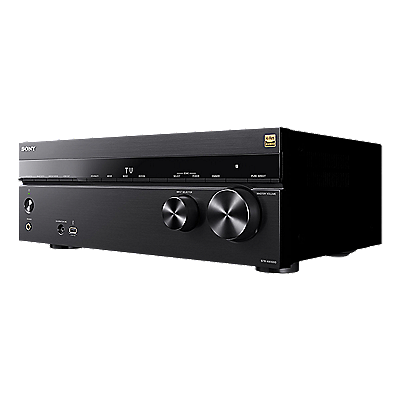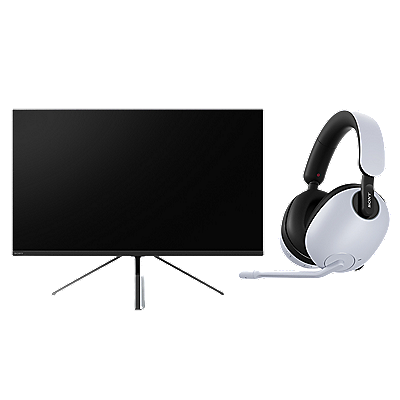Our headphones are engineered for high-quality design and sound, and also with the environment in mind. Under our Green Management 2025 environmental targets, Sony continues to pursue environmentally conscious development of both products and packaging.
Development of recycled plastics
Plastic materials for recycling are typically painted or coloured, making them unsuitable for use in decorative parts.
In order to solve this problem, we procure unpigmented industrial scrap from automobile parts, which we precisely sort to colour and use in a wide range of parts.
[1] Collecting industrial scrap from automobile parts [2] Sorting the parts (e.g. emblems, doorknobs) [3] Shredding [4] Pelletization [5] Colouring
Starting with unpigmented pellets minimizes the additives required in the colouring process. This enables the use of more than 85% recycled material in our plastics, and up to a remarkable 98% for black materials.

Expanding the available range of product colour variation

[1] Recycled ABS, more than 85% [2] Additives

We have successfully introduced this recycled plastic into body parts of new models (WH-1000XM5, LinkBuds and LinkBuds S). And we’re just getting started, with much more use of recycled plastic planned in our headphones going forward.
Sustainable packaging
Our campaign for sustainable packaging includes several new and current initiatives.
The Green Management 2025 targets include the total elimination of plastic from the packaging of newly designed small products by 2025. With each new headphone design from Sony, we are expanding our use of sustainable packaging materials, and striving to achieve this goal in advance of the target year.


We continue to advance the adoption of Sony’s proprietary sustainable paper, Original Blended Material, for the packaging of our flagship headphone model, the 1000X series (the WF-1000XM4 and WH-1000XM5). Original Blended Material is a sustainable paper material made from bamboo, sugarcane fibres, and post-consumer recycled paper.
Introducing the packaging for the WF-1000XM4 and the WH-1000XM5

WF-1000XM4 package uses Original Blended Material for all parts of the packaging except the label

WH-1000XM5 product box uses Original Blended Material
As part of our wide-ranging renewal efforts, we are changing the outer packaging of existing models from plastic to paper.
The packaging for each model reduces plastic usage by more than 90%.

[1] Before renewal [2] After renewal

[1] Before renewal [2] After renewal
The individual carton design previously used PP (plastic) lamination which prevented recycling. This has been replaced with an abrasion-resistant varnish that allows the carton to be recycled.
[1] Process of PP lamination of paper surface
[2] Applying UV varnish with print technology


Sony Corporation,
Home Entertainment and Sound Products Business Group,
Mobile Product Business Division, Mobile Product Mechanical Design Department
Under its Road to Zero environmental plan, the Sony Group aims to minimize resource inputs, and has been pursuing the introduction of recycled materials in its home audio and other products for some time. However, in the case of ABS, the plastic mainly used in headphones, the lack of a recycled material on the market with high quality and a high recycled ratio has slowed the introduction of recycled materials. Therefore, we decided to develop a recycled ABS that is easy to use and has a high recycled content.
In cooperation with partner companies, we have newly developed a recycled ABS that allows a variety of colouring without the addition of virgin plastic by precisely sorting unpigmented ABS scrap material by colour. With LinkBuds, we tried to create a delicate appearance comparable to virgin ABS, which was difficult to achieve with conventional recycled ABS.
We have begun to introduce this recycled ABS in many headphone models. We will continue to take on further challenges in line with the Road to Zero plan.
Sony Corporation,
Home Entertainment and Sound Products Business Group,
Mobile Product Business Division, Mobile Product Planning Department

Sony is making changes to its headphones, both new models and products already on the market, with the aim of eliminating all plastic from their packaging. To reduce the amount of plastic used in packaging to zero across the board is not an easy task, as it is costly and the role of packaging differs depending on product characteristics, sales conditions, and customers. However, we believe that we were able to create packaging responsive to environmental considerations without compromising on functionality or appeal precisely because Sony has kept environmental considerations in mind from the initial stages of product creation.
The new WH-1000XM5 model introduces Sony’s proprietary paper Original Blended Material for the product box, and is the first model to carry the Original Blended Material logo. The design has been changed considerably from the previous WH-1000XM4 model, with the package designed to convey increased consideration for the environment.
We believe that for the cycle of sustainability to be realized, as well as creating products—of course—it’s also necessary to get customers to recycle those products to close the cycle. We will continue, while manufacturing products, to always consider what kind of products are appropriate to make for the planet.
LEARN MORE ABOUT SONY’S TECHNOLOGY




















































